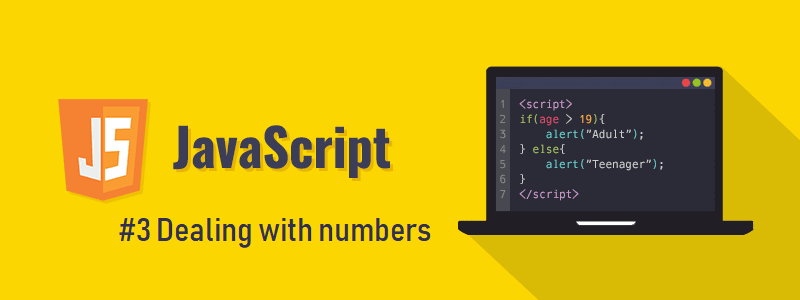
In Javascript , you can do operations on numbers to help you do calculations and make things easier.
Basic operations on numbers
- Addition : using " + " operator
var sum ;
sum = 10 + 5 ;
console.log(sum); // output : 15- Subtraction : using " - " operator
var difference ;
difference = 22 - 10 ;
console.log(difference); // output : 12- Division : using " / " operator
var quotient ;
quotient = 50 / 5 ;
console.log(quotient); // output : 10- Multiplication : using " * " operator
var product ;
product = 7 * 2;
console.log(product); // output : 14- Getting remainder of division : using " % " operator
var remainder ;
remainder = 10 % 4;
console.log(remainder); // output : 2- Raising a number to a power : using the " ** " operator
var num = 3;
squaredNum = num ** 2;
console.log(squaredNum) // output : 9
Augmented operations on numbers
Sometimes , you want to update a variable storing a numeric value by doing any of the operations (like : adding to it , subtraction from it , dividing or multiplying it by something).class="javascript">But you don't have to use the long form like the following one.var num = 2 ;
// adding 3 to the value of num and assigning this value (5) to the variable num
num = num + 3 ;
var num = 2;
// adding 3 to the value of num and assigning this value (5) to the variable num
num += 3 ;
In the previous example , we used the plus equals operator " += "
which does the same thing as the code example before it.
This can be used in the operations (+, -, , /).
var num = 20 ;
// examples of augmented operations that can be done
num += 2 ;
num -= 3 ;
num *= 5 ;
num /= 11 ;
You can replace the value you use to update your variable by another variable as in the following example
var salary = 1500;
var bonus = 250;
console.log(salary); // output : 1500
salary += bonus;
console.log(salary); // output : 1750
var maxTemperature = 32;
var minTemperature = 24;
var averageTemperature = ( maxTemperature + minTemperature ) / 2 ;
console.log(averageTemperature); // output : 28
Incrementing and decrementing by one
Sometimes you want to update variables by incrementing or decrementing them by one, instead of using (num += 1 or num -= 1) , you can use a shorter way using " ++ " and " -- " operators./p>
var num = 6;
num++; // increases it by one to be 7
num--; // decreases it by one to be 6 again
Order of operations
If you have a more complex calculation you have to know what is calculated first , the order of operations that the computer follows is the same as the one you studied in your math's classes, which is PEDMAS (from left to right) :
- Parenthesis (Brackets)
- Exponents ( powers )
- Division and Multiplication
- Addition and Subtraction
Some people make it funnier and easier to remember by saying it like : " please excuse my dear aunt Sally ! " Example : in ( 2 * (4 + 6) * 2 / 5 - 1) :
- first ( 4 + 6 ) is calculated to be 10 ,
- then it's raised to the second power to be 100 ,
- then it's multiplied by 2 to be 200 ,
- after that, it's divided by 5 to be 40 ,
- and finally, 1 is subtracted from it to be 39.






Top comments (0)